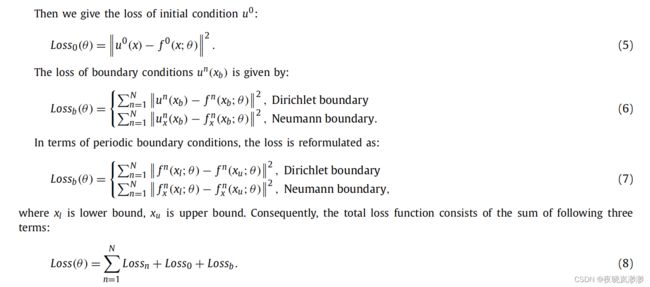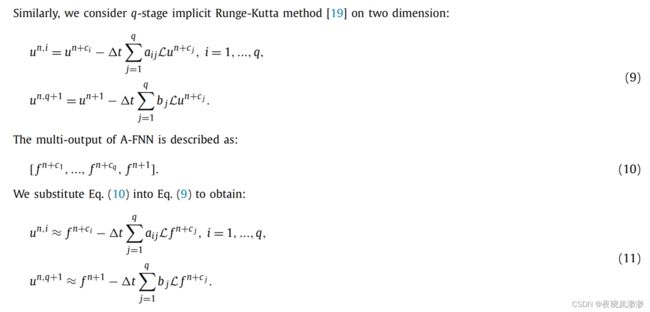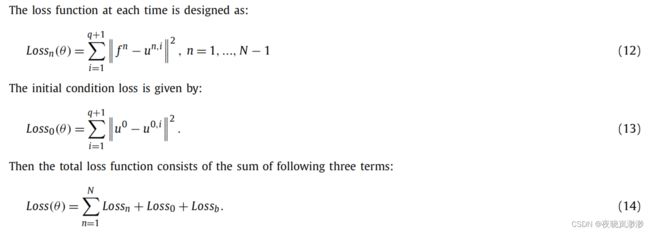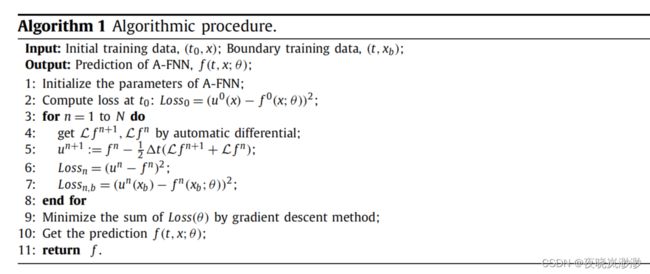论文解读:DeLISA: Deep learning based iteration scheme approximation for solving PDEs
2. Methodology
2.1. 问题设置
In this work, we consider a family of PDEs in a bounded domain Ω ∈ R d \Omega \in \mathbb{R}^d Ω∈Rd:
u t ( t , x ) + L u ( t , x ) = 0 , ( t , x ) ∈ [ 0 , T ] × Ω u_{t}(t,x)+\mathcal{L}u(t,x)=0,(t,x)\in[0,T]\times \Omega ut(t,x)+Lu(t,x)=0,(t,x)∈[0,T]×Ω
where u ( t , x ) u(t, x) u(t,x) is the latent solution to be solved, L \mathcal{L} L is differential operator, and u t u_t ut denotes first-order derivative of u u u with respect to t t t. Initial and boundary conditions are given by practical problem.
2.2. DeLISA 架构
We consider one-step implicit multistep method [36], namely trapezoidal rule, on one dimension:
u n + 1 = u n − 1 2 Δ t ( L u n + 1 + L u n ) , n = 0 , 1 , 2 , 3 , . . . . , N − 1 u^{n+1}=u^{n}-\frac{1}{2}\Delta t\left(\mathcal{L}u^{n+1}+\mathcal{L}u^n\right), n=0,1,2,3,....,N-1 un+1=un−21Δt(Lun+1+Lun),n=0,1,2,3,....,N−1 ( 2 ) ~~~~~~~~~~~~~~~~~~~~~~~~~(2) (2)
where u n u^n un, that is u ( t n , x ) u(t_n, x) u(tn,x), corresponds to solution u u u at time n Δ t n\Delta t nΔt, Δ t \Delta t Δt is time step. Then the approximation f ( t , x ; θ ) f (t, x; \theta ) f(t,x;θ) of u u u is applied in Eq. (2) to construct a new iteration:






[36] A. Iserles, A First Course in the Numerical Analysis of Differential Equations, Cambridge University Press, 2009